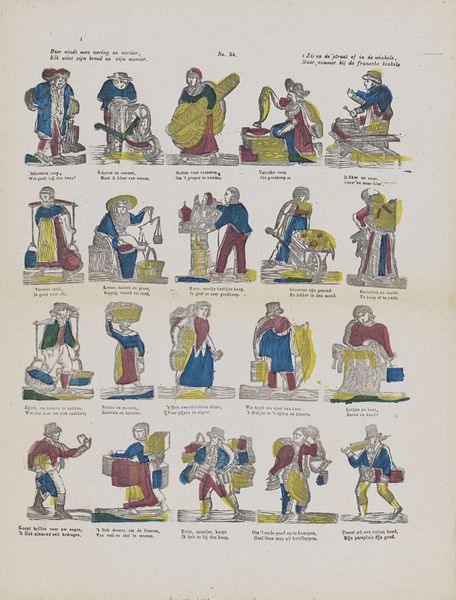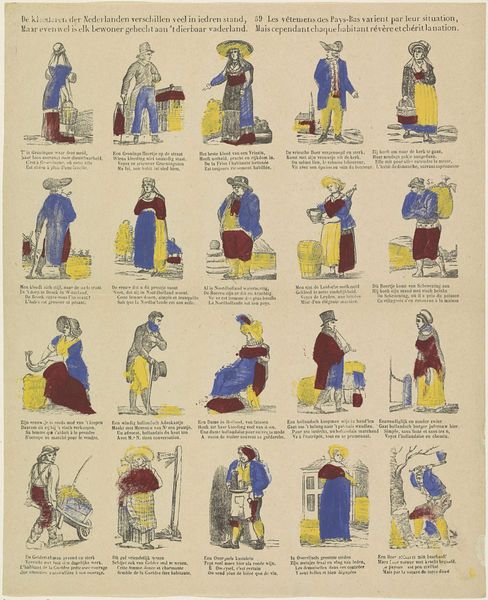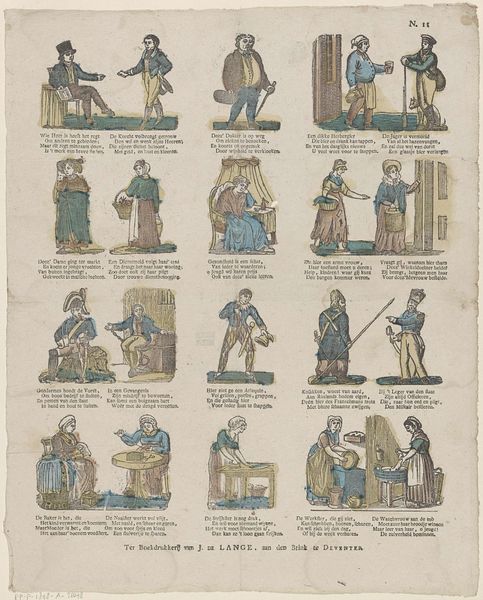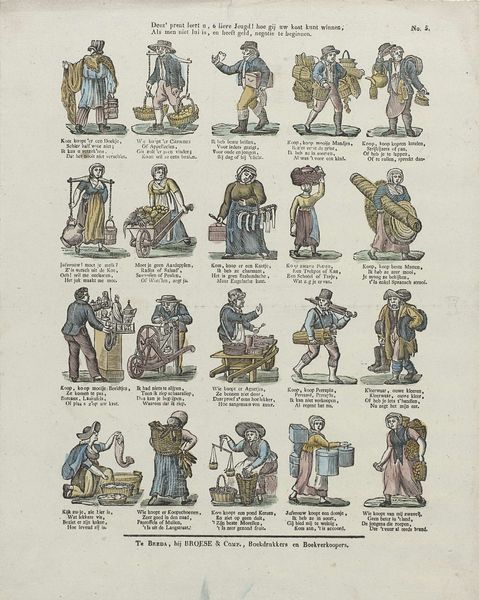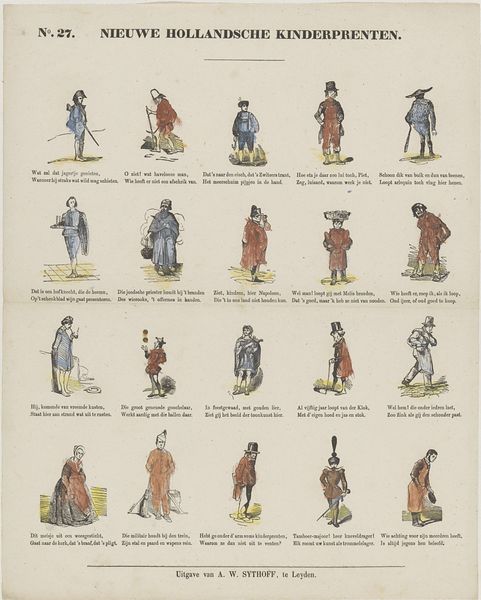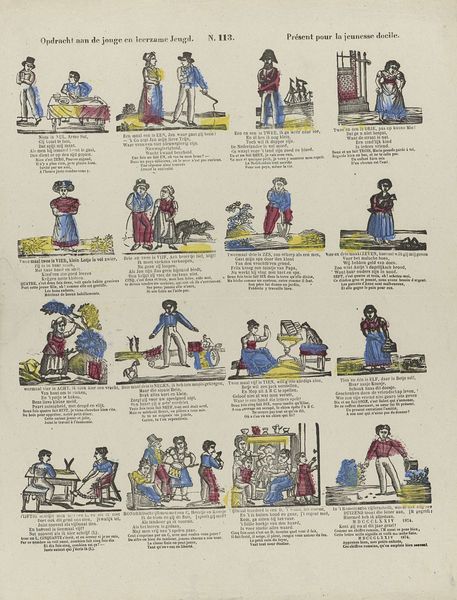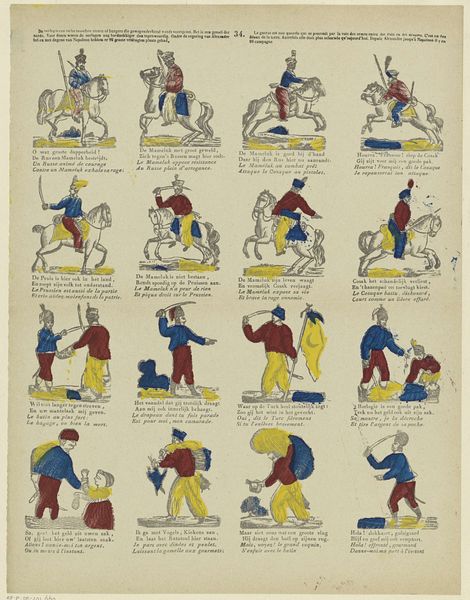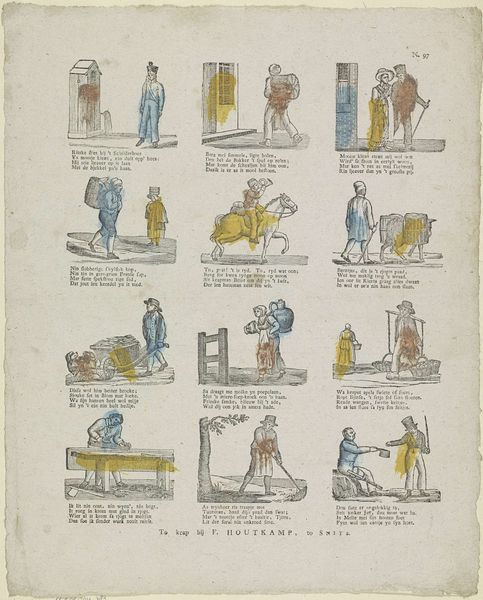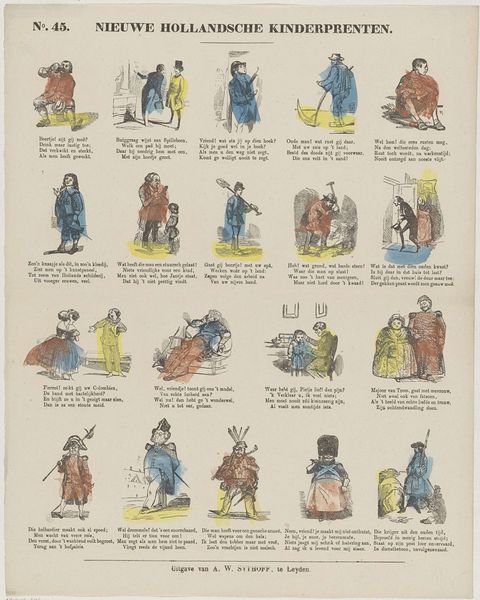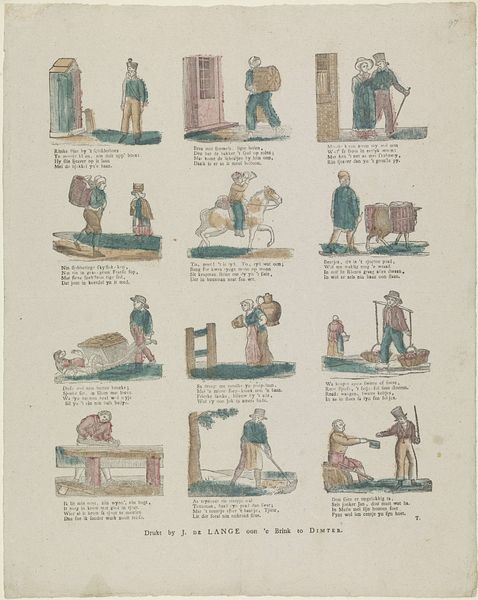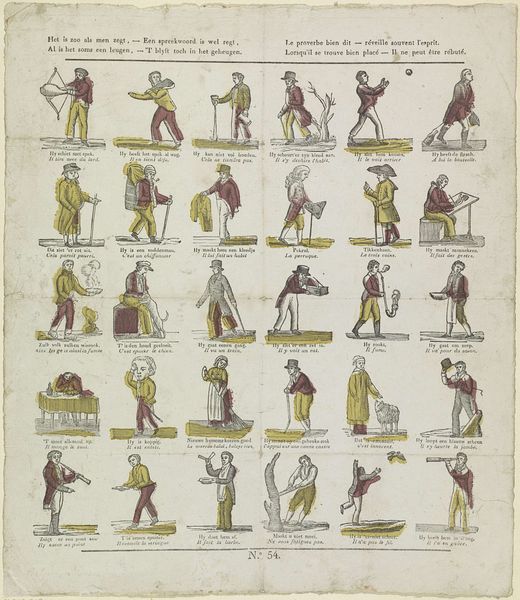![De kleederen der Nederlanden / Verschillen veel in iedren stand [(...)] by Philippus Jacobus Brepols](/_next/image?url=https%3A%2F%2Fd2w8kbdekdi1gv.cloudfront.net%2FeyJidWNrZXQiOiAiYXJ0ZXJhLWltYWdlcy1idWNrZXQiLCAia2V5IjogImFydHdvcmtzL2Q0OGYxMTc3LTczMzAtNDhhNi1iNTllLTBmYzAwOGNjYjhmNC9kNDhmMTE3Ny03MzMwLTQ4YTYtYjU5ZS0wZmMwMDhjY2I4ZjRfZnVsbC5qcGciLCAiZWRpdHMiOiB7InJlc2l6ZSI6IHsid2lkdGgiOiAxOTIwLCAiaGVpZ2h0IjogMTkyMCwgImZpdCI6ICJpbnNpZGUifX19&w=3840&q=75)
De kleederen der Nederlanden / Verschillen veel in iedren stand [(...)] 1800 - 1833
0:00
0:00
philippusjacobusbrepols
Rijksmuseum
drawing, print
#
drawing
#
16_19th-century
# print
#
romanticism
#
genre-painting
Dimensions: height 415 mm, width 335 mm
Copyright: Rijks Museum: Open Domain
Curator: This print, "The Clothes of the Netherlands," created between 1800 and 1833 by Philippus Jacobus Brepols, really grabs my attention. It looks like a series of portraits documenting Dutch citizens. It almost reads as sociological data. How do you interpret this compilation? Editor: I’m intrigued by how it visually presents social strata through clothing. Each figure seems carefully rendered to showcase their class and profession. It makes me wonder about the relationship between identity and appearance. Is this purely observational, or do you see a particular agenda at play? Curator: I see it as deeply embedded within the social and political landscape of the Netherlands at that time. These aren't simply fashion plates; they’re reflections of a society grappling with national identity, class divisions, and emerging bourgeois values. Consider how clothing here acts as a signifier – broadcasting one's status, trade, and regional belonging. Who benefits from reinforcing such visual hierarchies, and conversely, who is marginalized? Editor: So, by documenting these different "types," is the artist implicitly commenting on social inequalities or even contributing to them? Curator: Precisely! Think about who has the power to define and categorize others. By creating these visual taxonomies, Brepols reinforces a particular understanding of Dutch society – one that might naturalize existing power dynamics. We might also explore how this relates to contemporary discussions about representation, cultural appropriation, and the gaze. How do you think this piece might speak to someone today, especially concerning representation? Editor: It makes me think about how we still use clothing and appearance to make judgments about people. This piece highlights how constructed those ideas really are, and I’ll definitely think differently now about those assumptions. Thank you! Curator: Indeed. Art, especially when reflecting social dynamics, provides fertile ground for challenging those assumptions.
Comments
No comments
Be the first to comment and join the conversation on the ultimate creative platform.
